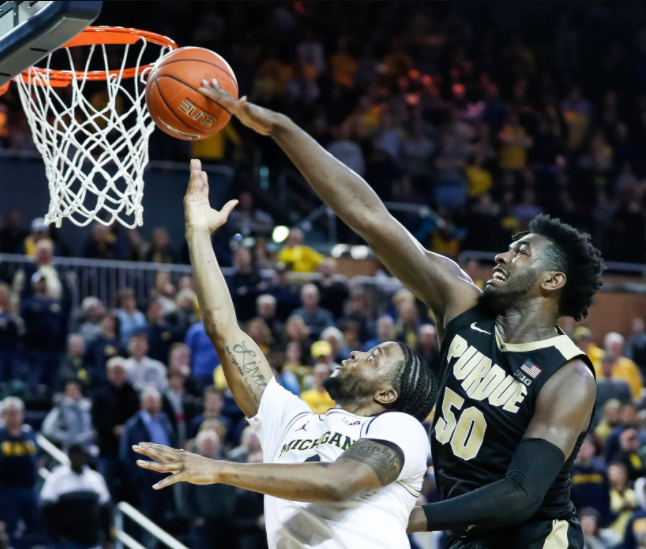How to Practice Layup Effectively – Misunderstood Rules in Basketball
Whether great players or basketball fans like us, the use of layups on the way is an indispensable weapon of destruction in the game. It's not just us who walk, don't make layups, and take wrong steps. Even the great LeBron and other star players happen from time to time. So how can we train this action more scientifically and effectively in our usual practice? First of all, let's talk about some misunderstandings in daily practice.

How to Practice Layup Effectively – Misunderstood Rules in Basketball
Misunderstanding 1: when practicing, only practice complete movement skills, never break down the practice
Most coaches and students repeat the whole process of dribbling, stepping, jumping, and landing directly from outside the three-point line when guiding and practicing the three-step layup. But for the majority of beginners, or friends who are learning to lay up while walking with the left hand (assuming you are right-handed here), this complete practice method is not conducive to mastering the action, and the whole action should be practiced step by step.
Usually, you can use the reverse decomposition method. We take the three-step layup off the left hand as an example. This whole process is divided into three steps: left-hand dribble, starting (including the first step and the second step), and low-hand layup. The reverse decomposition practice method starts from the last step.
– First of all, practice the single-handed finger pick ball practice of the left hand, which needs to be noted: finally, it must use the index finger and middle finger of the finger as the main source of strength, let the ball rotate forward, and hit the board into the basket. If you are practicing this action with the left hand, you can stand 45 degrees near the left side of the basket practice.
– The second step is footwork practice: for the left-hand layup, the most difficult link is the adaptation of the steps. Because we are used to the right-hand layup (first with the right foot, then with the left foot), while the left-hand layup requires the first with the left foot, and the take-off foot is the right foot. Many friends believe that it is difficult to learn to lay up with the left hand if you practice directly and completely. Therefore, in this link, students stand two steps away from the left basket (their own two-step size). They were not allowed to dribble, but only practiced the last two steps. I want you to keep in mind: 1. Step on your left foot, 2. Step on your right foot and take off. This decomposition reduces the difficulty of practice. Through continuous repetition, everyone will soon master the basic pace on the left. After this exercise, combine the previous left-hand dribbling exercise together, which is equivalent to the transitional stage of the complete action, but it is very necessary.
– The third step is the complete action practice: because the left-hand dribble basic skill practice is generally strengthened before learning the layup, so there is no need to practice alone here. It should be noted that when practicing the left-hand layup, it is best to always use the left hand to dribble the ball during the whole process, especially for beginners. If you dribble the ball with the right hand on the left side and complete the layup, it is likely that the soles of your feet will be messy, and people's brain memory will choose the most familiar way to complete unfamiliar new actions, so it is likely that your first step is the right foot (that is, the right-hand backhand layup).
Misunderstanding 2: practice your right hand first, then your left hand
Usually, when we practice dribbling, passing, layup, and other techniques, we will consciously practice the familiar hand (or side). As early as 1999, in an interesting experiment in the "research and practice of using cross transfer training methods to promote basketball players' weak hand technology": he first asked the players to carry out the dribble practice of the weak hand, usually the left hand, and insert the strong hand practice during the practice, usually the right hand. Comparing the number of errors in the exercise with the traditional method, it is found that the number of errors in the experimental group is much smaller than that in the traditional group.
In fact, the best way is to practice the left-hand layup first. Many scholars and experts have confirmed: that for a beginner, if you first master the left-hand layup method, this process will help you quickly learn the right-hand layup. But the reverse is not good. If you first learn the layup on the side you are familiar with and beneficial to, then when you learn the layup on the left hand, it is equivalent to increasing your difficulty, because once the power of the right hand is finalized, the tacit understanding of the hand and foot is very high, and then change its steps (when you layup on the left hand, you step on the left foot first), you will be very uncomfortable, and the coordination of your steps will be greatly challenged. This is why: if you are a beginner (not on both sides), you will master it faster than your friend who has learned the right-hand layup.
For right-handed players, the breakthrough layup of the left hand can often bring great improvement to themselves (because defenders tend to have their right foot in front, so the left side is easier to break through). No matter which side of the layup, it is an important weapon to end the game and obtain points.
